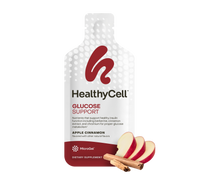Article at a Glance
- Vitamin D is one of 13 essential vitamins you need in your diet. It helps maintain bone health, prevent inflammation, and supports the immune system.
- Vitamin D is known as the “sunshine vitamin” because exposure to sunlight enables the body to produce it. You can also get vitamin D through a few food sources and supplements.
- There are two forms of vitamin D: vitamin D2 and vitamin D3.
- A vitamin D deficiency can cause gastrointestinal symptoms and vision loss. A more serious deficiency can result in low bone mineral density and a condition known as osteomalacia.
If you don’t spend much time outside, you may be low on vitamin D. While it’s important to use sunscreen if you’re going to be outside for long periods of time, spending about 15 to 20 minutes outside each day without sunscreen will help your body absorb some nourishing sunshine. Vitamin D, also known as the “sunshine vitamin,” is a key nutrient your body needs for bone and vision health. Find out why this vitamin is so important and how to get it.
What Is Vitamin D?
Vitamin D is one of thirteen essential vitamins. Essential vitamins need to be present in the diet because the human body cannot make the nutrients on its own, or in sufficient amounts.[1] Vitamin D is considered an essential vitamin even though it is also produced by the skin as a prohormone, which can be converted into an active hormone in the liver and kidneys, and then communicates with other tissues.[1]
Along with being essential, vitamin D is also fat-soluble, which means unlike water-soluble vitamins, these nutrients are stored in the liver and fat cells of fatty tissue. Since the four fat-soluble vitamins, vitamins A, D, E, and K, are stored in tissue and not as easily flushed out of the body, there is a risk to develop toxic side effects. However, toxicity only occurs when the vitamin is taken in very high concentrations.
Benefits of Vitamin D
Vitamin D supports and maintains bone health by promoting bone growth and remodeling.[2] Vitamin D regulates and promotes absorption and utilization of the minerals calcium and phosphorous, which in turn also supports bone and dental health.[3]
In addition to supporting and maintaining the skeletal system, vitamin D is also involved with cell differentiation and growth, neurological functions, lowering inflammation, and boosting the immune system to fight off illness.[1][4] Other research shows it may aid in the prevention of certain diseases such as type 2 diabetes, multiple sclerosis, hypertension, and possibly even colon, prostate, and breast cancer.[2]
Forms of Vitamin D — Which Is Best?
There are two forms of vitamin D: ergocalciferol or vitamin D2, and cholecalciferol in vitamin D3.[5] Vitamin D2 is derived from plant and yeast dietary sources.[5] Vitamin D3 is the form that is made by the body when exposed to the sun’s UV rays. It’s also found in animal food sources and lichen, which is a cyanobacteria or an algae.[5]
When vitamin D is ingested or synthesized in the skin it needs to be metabolized into the active hormonal form, calcitriol.[2] Before metabolizing into the active form, the first conversion of vitamin D occurs in the liver where it is processed into calcidiol, and then after is further metabolized in the kidneys into calcitriol, which assists in calcium absorption.[1][2]
The most bioavailable and effective form is vitamin D3 (cholecalciferol), and it is also considered to be the most natural form of vitamin D.[1][3]
Sources of Vitamin D — From Food and Nutrition Supplements
Limited food sources contain vitamin D. Dietary options that contain vitamin D2 include mushrooms. Vitamin D3 is found in salmon, tuna, egg yolks, beef liver, and cheese.[1][2][4]
Because vitamin D is absent from most food sources, certain products such as breakfast cereals and dairy products are fortified with vitamin D, which will be indicated on the food label.[1][4] Both vitamin D2 and D3 are used in nutrition supplements.[1] When consuming fat-soluble vitamins like vitamin D, it is best to accompany these nutrients with a dietary fat for optimal absorption.
Vitamin D is also known as the “sunshine vitamin” because it is produced by the body when the skin is exposed to sunlight.[4] The production of vitamin D3 within the skin is dependent on the time of day, season, and an individual’s skin pigmentation. Production is reduced when the skin is covered by clothing or sunscreen.[5] The vitamin D3 produced by the body is equivalent to the vitamin D3 in animal food sources.[1]
Recommended Daily Dose of Vitamin D — What Physicians Advise
The recommended daily dose for nutrients is unique to a person’s age, gender, other personal factors, and specifically environmental location for this particular vitamin. For most people, 15 minutes of sun exposure three times per week is sufficient to produce adequate vitamin D3 levels.[1] For this reason, some scientists believe vitamin D is a nonessential nutrient that does not need to be present in the diet but can be conditionally essential for those who are unable to produce adequate amounts.[1] However, for those who are not exposed to enough sunlight, tanning beds are not a recommended resource to obtain sufficient amounts of vitamin D as the risks of skin cancer outweigh the pros.[1]
The Food and Nutrition Board (FNB) established a recommended dietary allowance (RDA) for vitamin D to ensure sufficient bone health and proper calcium absorption.[2 ] The RDA amounts in Table 1 are a reference for nutritional adequacy in healthy individuals. The RDA of vitamin D for adults is the same for both women and men, which is 15 mcg (micrograms) or 600 IU (International Units).
Recommended Dietary Allowance (RDA) of Vitamin D
- Infants (0–12 months) 10 mcg/day
- Children (1–8 years) 15 mcg/day
- Adolescents (9–18 years) 15 mcg/day
- Adults (19–70 years) 15 mcg/day
- Adults (70+ years) 20 mcg/day
- Pregnant and lactating women 15 mcg/day
Table 1: Daily Vitamin D Recommended Dietary Allowance (RDA) to Meet the Needs of Healthy Individuals [2]
Certain populations may need to be more mindful when evaluating their vitamin D needs. Those using inflammation-reducing medications such as steroids can inhibit vitamin D metabolism and absorption, which can cause further health complications.[2] With any particular medication or health condition, it is always best to consult with your primary healthcare provider before taking the Healthycell® products or any nutrition supplement.
Vitamin D Toxicity Is Uncommon
Vitamin D toxicity from food sources and sun exposure is uncommon. It’s only typically seen when consuming very high doses in nutrition supplements.[2] Consumption must exceed over 25 mcg/day (4,000 IU) for an extended period to become toxic.[2][5]
It is possible for vitamin D levels to become toxic when supplementing high doses because it causes calcium levels to increase, which can cause hypercalcemia and hypercalciuria.[1] Hypercalcemia occurs when there is too much calcium in the bloodstream. Hypercalciuria occurs when there is too much calcium in urine, which can further result in kidney stones.[1][8]
Other symptoms of toxicity are bone loss, anorexia, nausea, and in the most extreme cases, even death.[1][5 ]To avoid toxicity, a maximum level that may cause an adverse event, also known as a tolerable upper intake level (UL) shown in Table 2, has been set for vitamin D.
Tolerable Upper Intake Level (UL) of Vitamin D
- Infants (0–12 months) 25–38 mcg/day
- Children (1–8 years) 63–75 mcg/day
- Adolescents (9–18 years) 100 mcg/day
- Adults (19+ years) 100 mcg/day
- Pregnant and Lactating Women 100 mcg/day
Table 2: Daily Vitamin D Tolerable Upper Intake Level (UL)[2]
Vitamin D Deficiency, Symptoms, and People at Risk
Vitamin D deficiency is a common nutrient deficiency. When children are deficient in vitamin D they may have inadequate bone mineralization. They then become susceptible to bone fractures and developing rickets, which is characterized by soft bones, improper bone growth, and skeletal deformities in the legs.[1][2]
Vitamin D deficiency in adults results in a condition called osteomalacia — soft and weak bones that are prone to fracture due to poor bone mineralization and high bone demineralization.[1][5] Adults who are deficient in vitamin D tend to have a low bone mineral density (BMD) and are also at risk of bone fractures and developing osteoporosis.[1][6]
Less severe symptoms of vitamin D deficiency include:
- Appetite loss
- Weight loss
- Nausea
- Diarrhea
- Burning of the mouth and throat
- Vision issues [3]
Those who are at risk for vitamin D deficiency include:
- Individuals with inadequate vitamin D absorption
- Those who neglect vitamin D rich or fortified foods
- Malnourished vegetarians or vegans
- People with darker skin
- Those who live far from the equator or are exposed to little sunlight
- Older adults.[1]
Vitamin D in Healthycell® Products — Only the Best Form
Vegan Essentials (A MICROGEL™ product)
A plant-based Vegan Vitamin D supplement as sustainable VegD3 cholecalciferol in MCT. The dosage of vitamin D3 in Vegan Essentials is 40mcg, which satisfies 200 percent of the Daily Value (%DV).
Bioactive Multi (A MICROGEL™ product)
The form of vitamin D Bioactive Multi contains is vitamin D3 as cholecalciferol from lanolin. The dosage of vitamin D3 in Bioactive Multi is 40 mcg, which satisfies 200 percent of the Daily Value (%DV).
Healthycell Pro
Healthycell® uses only the best form of vitamin D, which is vitamin D3, in the form of natural cholecalciferol from Lichen, known by the registered name Vitashine®. The dosage of vitamin D3 in Healthycell® and Healthycell Pro is 500 IU (International Units) in the morning formula and 500 IU in the evening formula, for a daily dose of 1,000 IU or 25 mcg, satisfying 250 percent of the Daily Value (%DV). Nutrition supplement labeling and food labeling guidelines use Reference Daily Intake (RDI) as the standard for dosage.
Conclusion and Recommendations
- Vitamin D supports bone and vision health.
- A vitamin D deficiency can cause soft or weakened bones, gastrointestinal symptoms, and vision loss.
- Try spending 15 to 20 minutes outside each day to get more of the “sunshine vitamin” or try taking a vitamin D supplement. Speak with your healthcare provider before taking any new supplements.
References:
1. McGuire, Michelle, PhD, and Kathy Beerman A., PhD. “Chapter 11 Fat-Soluble Vitamins.” Nutritional Sciences: From Fundamentals to Food. 2nd ed. Australia: Thomson/Wadsworth, 2007. 495-501. Print.
2. “Vitamin D — Health Professional Fact Sheet.” National Institutes of Health. U.S. National Library of Medicine, 11 Feb. 2016. Web. 13 Sept. 2016.
3. Balch, Phyllis A., CNC. Prescription for Nutritional Healing. 4th ed. New York: Avery, Print.
4, Kohn, Jill, MS, RDN, LDN. “What Is Vitamin D?” Eat Right. Academy of Nutrition and Dietetics, 15 June 2015. Web. 15 Sept. 2016.
5. Brasaemle, Dawn, PhD. “Vitamin D Lecture.” Rutgers University – Vitamin D. New Brunswick. 2015. Lecture.
6. Lips, Paul, and Natasja M. Van Schoor. “The Effect of Vitamin D on Bone and Osteoporosis.”Best Practice & Research Clinical Endocrinology & Metabolism25.4 (2011): 585-91. Web.
7. Geleijnse, Johanna M., Cees Vermeer, Diederick E. Grobbee, Leon J. Schurgers, Marjo H. Knapen, Irene M. Van Der Meer, Albert Hofman, and Jacqueline C.M. Witteman. “Dietary Intake of Menaquinone Is Associated with a Reduced Risk of Coronary Heart Disease: The Rotterdam Study1.” The Journal of Nutrition 134 (2004): 3100-105. The Journal of Nutrition. The American Society for Nutritional Sciences, 1 Nov. 2004. Web. 15 May 2017.
8. Wisse, Brent, MD, David Zieve, MD, MHA, and Isla Ogilvie, PhD. “Hypercalcemia: MedlinePlus Medical Encyclopedia.” Hypercalcemia: MedlinePlus Medical Encyclopedia. US National Library of Medicine, 03 Feb. 2016. Web. 15 Sept. 2016.




